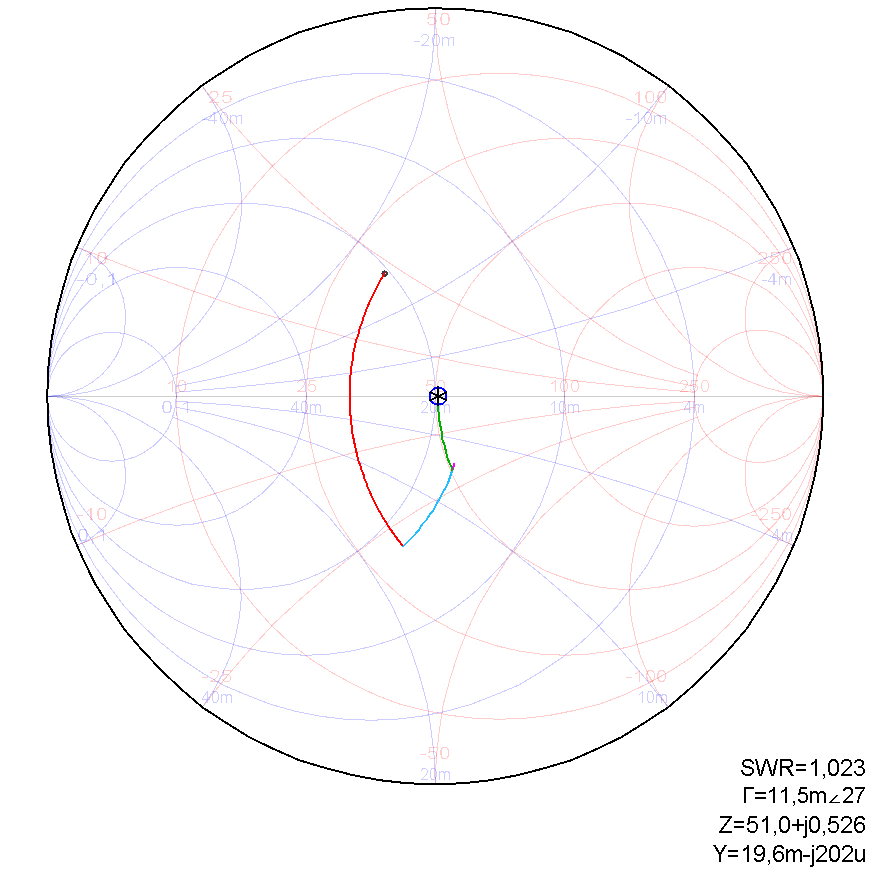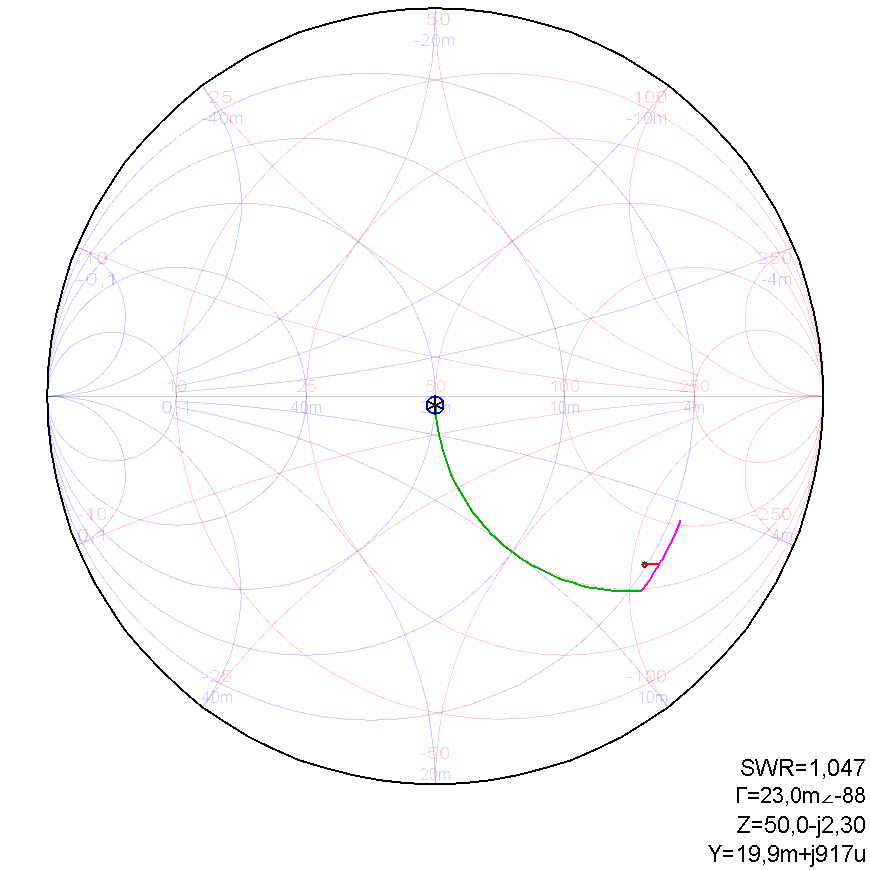SWRA730 February 2022 CC1311P3 , CC1311R3 , CC1312R , CC1312R7 , CC1314R10 , CC1352P , CC1352P7 , CC1352R , CC1354P10 , CC1354R10
- Trademarks
- Acronyms
- 1Description of the PCB Antenna
- 2Test Setup
- 3Unmatched Results
- 4Single-Band Matching and Result
-
5Dual Band Matching and Results
- 5.1 433-MHz and 2440-MHz Smith Chart, SWR, Bandwidth, and Efficiency
- 5.2 470-MHz and 2440-MHz Smith Chart, SWR, Bandwidth and Efficiency
- 5.3 490 MHz and 2440 MHz Smith Chart, SWR, Bandwidth and Efficiency
- 5.4 510-MHz and 2440-MHz Smith Chart, SWR, Bandwidth, and Efficiency
- 5.5 868/915 and 2440-MHz Smith Chart, SWR, Bandwidth, and Efficiency
- 6Summary - Bill of Materials and Results
- 7Conclusion
- 8References
5.2 470-MHz and 2440-MHz Smith Chart, SWR, Bandwidth and Efficiency
Figure 5-7 and Figure 5-8 shows the theoretical Smith chart for matching the antenna for dual-band 470 and 2440 MHz with a theoretical SWR of 1.023 and 1.047.
 Figure 5-7 Theoretical Smith Chart for Dual Band 470-MHz Match
Figure 5-7 Theoretical Smith Chart for Dual Band 470-MHz Match Figure 5-8 Theoretical Smith Chart for Dual Band 2440-MHz Match
Figure 5-8 Theoretical Smith Chart for Dual Band 2440-MHz MatchFurther tuning of the resonance of the antenna was needed after realizing the theoretical match. Figure 5-9 and Figure 5-10 shows the resulting impedance and SWR which at 1.201 for 470 MHz and 1.278 for 2440 MHz is less than the threshold for a good match of SWR < 2.0. Table 5-3 shows the BOM with components used to relies the matching network given in Figure 1-2.
The bandwidth of the antenna defined by SWR < 2.0 can be seen in Figure 5-10 to be 484-459 = 25 MHz for 470 MHz and 2556-2290 = 266 MHz for 2440 MHz.
| Ref. Designator | Murata Part Number | Value |
|---|---|---|
| Z60 | LQP03TN6N2H02 | 6.2 nH |
| Z61 | GRM0335C1HR10WA01 | 0.1 pF |
| Z62 | LQP03TN36NH02 | 36 nH |
| Z63 | GGRM0335C1H7R5CA01 | 7.5 pF |
| Z64 | LQP03TN39NH02 | 39 nH |
Figure 5-11 and Figure 5-12 shows the radiation pattern of the antenna at 470 and 2440 MHz. Table 5-4 shows the TRP and efficiency for the antenna with the given matching network.
| Figure 43 | Figure 44 | |
|---|---|---|
| Frequency | 470 MHz | 2440 MHz |
| Power setting | 13 dBm | 10 dBm |
| Conducted output power | 12.65 dBm | 9.15 dBm |
| TRP | 7.26 dBm | 8.19 dBm |
| Efficiency | 28.9 % | 80.2 % |